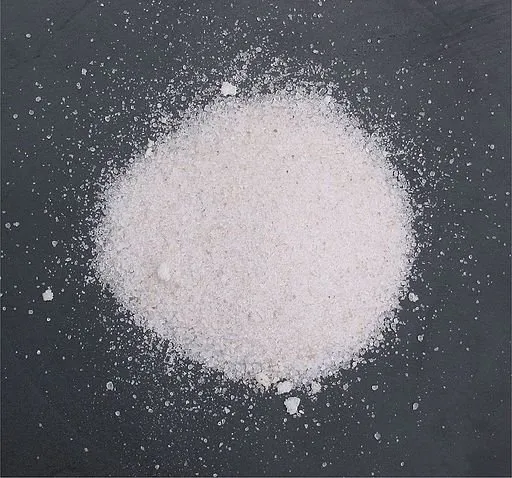Selected mineral fertilizers with the greatest use in the garden are described below
CALCIUM
- do not use on soils rich in magnesium
- do not add to composts to neutralize the pH (this will result in serious losses in nitrogen)
- do not mix with manure
- Use only when the soil is too acidic (see table below), every 2-3 years, 3-4 weeks before planting/seed, or in autumn after a harvest. Mix the fertilizer with the soil to a depth of 20 cm.
- Dolomite (dolomite limestone)
contains 25-30% calcium oxide and 15-18% magnesium oxide - Limestone
contains 39-53% calcium oxide - Marl
contains 25-95% calcium oxide - Lime from coral algae
Loosens the soil due to the increased activity of bacteria
is used at a dose of 25-30 g / m2
when compost with lime, use 5 kg per 1 m3
to protect against fungal diseases, you can dissolve in water and spray the plants - Calcite
a good source of calcium when the magnesium level in the soil is too high to use dolomitic lime - Crushed eggshells
perfect especially for crops with cabbages
Increase the absorption of other nutrients
POTASSIUM
( )
)
source
It should be remembered that the sources of potassium are not only mineral fertilizer but also manure and compost. The use of mineral fertilizers is therefore very rarely required.
Potassium Sulfate
contains 50% K2O and 18% S
it is a chloride-free fertilizer;
especially useful for growing potatoes, tomatoes, cucumbers, strawberries, and berries
sulfates change the pH of the soil, making it more acidic
Dissolve 40 g of potassium sulfide in 1l of water and spray for winter against fungal diseases and severe potassium deficiencies. Caution with sulfur-sensitive plantsKainite
consists of 14% K2O, 5% MgO, 20% Na, 4% S;
a rare rock used for the production of fertilizers, approved for use on organic farms. Use according to the manufacturer's instructionsCarnallite
consists of 8-10% K2O and 10% MgO.
a rare rock used for the production of fertilizers, approved for use on organic farms. Use according to the manufacturer's recommendationsWood ash
consists of 1% - 10% potassium
use a maximum of 700g per 10m2, be careful not to "burn" the plants
releases minerals after six months from application
deters worms
makes the soil more alkaline, so use with caution on soils with a pH above 6.5Powdered granite
composed of 3% - 5% potassium
released for 10 years
use up to 4 kg per 10 m2.Potassium permanganate
for the production of natural disinfectants and antifungal liquids: 3 g of potassium permanganate + 10 l of water, use undiluted
PHOSPHORUS
( )
)
source
Use only in the case of severe phosphorus deficiencies in plants, when supplementation with other natural fertilizers (compost, manure, etc.) does not bring satisfactory results.
- Phosphate rocks (phosphates); composed of 11.5% - 17.5% phosphorus
use 2-7 kg per 10 m2. phosphorus is released very slowly, the fertilization treatment with phosphorus rocks will not have to be repeated for years. - Phosphate flour; composed of 30% P2O5 and 26% -53%, CaO contains a lot of essential micronutrients for plants. Recommended for fertilizing acidic and neutral soils to increase bioavailability from 30% (application directly to the soil) to 80-90%, add it to compost and manure, liquid manure, and slurry.
MAGNESIUM + SULFUR
( )
)
source
- Kieserite; contains 27% MgO and 22% S.
Particularly high requirements in terms of sulfur demand are shown by: mustard, legumes, corn, and some vegetables, such as garlic, onion, red beet, leek, cruciferous vegetables
MICROELEMENTS AND OTHERS
- Basalt flour; contains 40% SiO, 8% CaO, 8.3% MgO, 1.7% K2O and elements such as manganese, zinc, copper, molybdenum, boron, iron, selenium
This fertilizer has a positive effect on the structure of both light and heavy soils, creating better living conditions for beneficial soil microorganisms.
It is also used to treat seeds before sowing, improving their resistance to soil pathogenic microorganisms. - Grey soap (potassium soap)
- Water glass (Sodium silicate)
- Bentonite; 50% montmorillonite, 20% illite, 5-10% kaolinite
binds water well, is good for sandy soils, increases their water-holding capacity, provides 70 different micronutrients
when preparing the compost, use 3 kg per 1 m3 - Alum
Dissolve 40g of alum in 10 liters of boiling water and saturate the anti-snail sawdust with it use undiluted against caterpillars and aphids - Dairy
milk/whey, diluted 1: 1 with spray water, against diseases of tomatoes on leaves and fruit - Aluminum sulfate
sulfates change the pH of the soil to be more acidic
Dissolve 200g of aluminum sulfate in 1l of water, mix in 9l of additional water before use and use against aphids and Greenhouse whitefly

